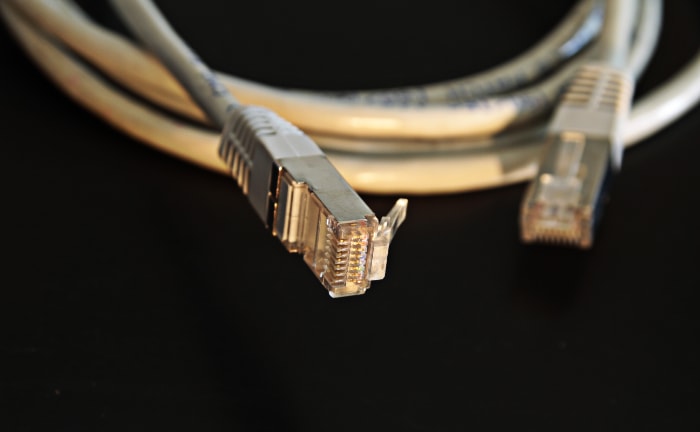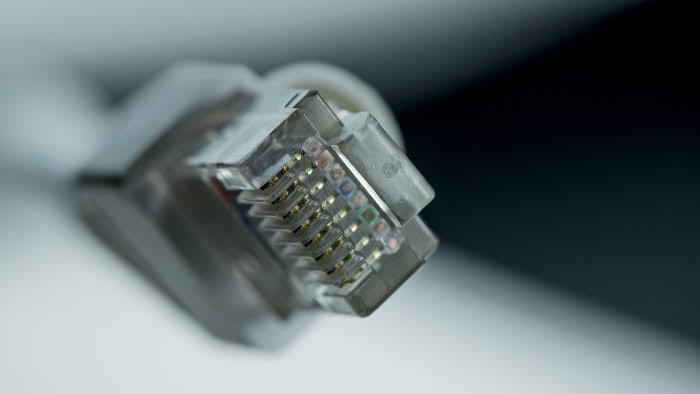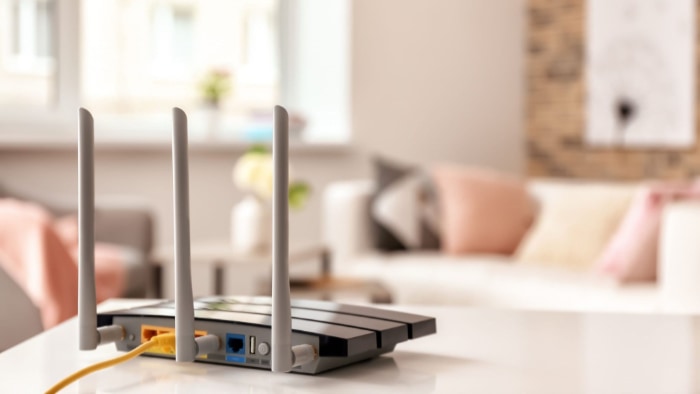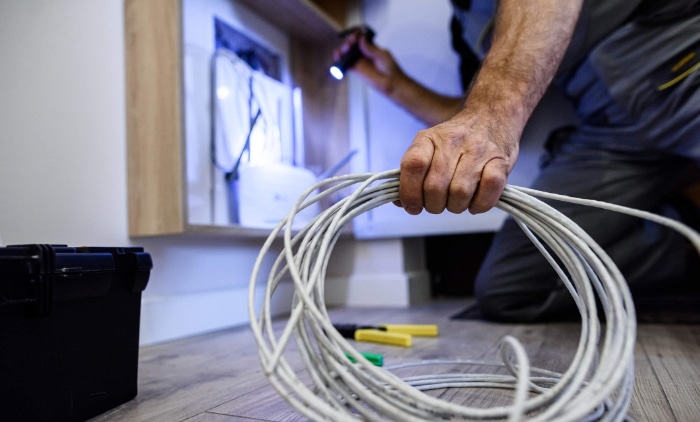Types of Ethernet Cables: A Clear Look at Your Options

Reliable and fast internet connectivity is the foundation of modern communication and technology, and Ethernet cables play a crucial role in making that possible. These cables are the lifeline of wired networks, responsible for ensuring stable and efficient data transfer between devices.
With numerous types available, each designed to meet distinct speed, bandwidth, and environmental needs, choosing the right cable can significantly impact performance and reliability.
Technical Specifications and Performance
Ethernet cables are categorized based on their performance capabilities, including speed, bandwidth, and resistance to interference. Each category serves a specific purpose, offering variations in capacity and design suitable for different applications.
Cable Categories (Cat5e to Cat8)
Ethernet cables fall into various categories, with each generation building upon the capabilities of its predecessor. Cat5e, an enhanced version of Cat5, supports speeds up to 1 Gbps and a maximum bandwidth of 100 MHz, making it suitable for basic home and office networks.
However, as data demands have grown, newer categories like Cat6, Cat6a, Cat7, and Cat8 have emerged to meet those needs.
Cat6 can handle speeds of 1 Gbps over 100 meters and 10 Gbps on shorter runs up to 55 meters, with a bandwidth of 250 MHz. For more advanced setups, Cat6a extends these capabilities by supporting 10 Gbps over the full 100 meters and featuring improved shielding with a bandwidth of 500 MHz.
Cat7 and Cat7a, designed for high-performance environments, offer bandwidths of 600 MHz and 1,000 MHz, respectively, with 10 Gbps speeds across 100 meters and advanced shielding for minimal interference.
Cat8 is the latest and most powerful option, designed for data centers and enterprise environments requiring extreme performance. It handles speeds up to 25 or even 40 Gbps over relatively short distances (up to 30 meters) and has a bandwidth capacity of 2,000 MHz.
Additionally, Cat8 cables feature extensive shielding to resist electromagnetic interference (EMI) and maintain stable performance in high-density network setups.
Speed vs. Distance Tradeoffs
Selecting a cable often involves balancing speed and distance requirements, as not all categories maintain the same performance over longer runs. For instance, Cat5e supports 1 Gbps speeds for up to 100 meters, but modern applications like streaming 4K video or running multiple connected devices may push its limits.
Cat6, while capable of 10 Gbps, achieves that speed only within 55 meters, beyond which performance may degrade. Cat6a alleviates this issue by extending 10 Gbps speeds to the full 100-meter range, making it a practical choice for high-bandwidth networks in larger spaces.
Higher-performance categories like Cat7 and Cat8 offer impressive speeds but typically at shorter distances. Cat8, for example, is optimized for short connections in data centers or server rooms, where 40 Gbps speed is a critical requirement within a 30-meter limit.
Future-Proofing Considerations
As networking demands continue to grow, selecting a cable capable of accommodating future advancements is essential. Current technologies such as 4K and 8K streaming, virtual reality, and smart home devices require higher speeds and lower latency.
Investing in cables like Cat6a or Cat8 allows networks to handle these demands while remaining prepared for emerging innovations, such as 40 Gbps connectivity or beyond.
While Cat5e may suffice for basic needs, upgrading to a higher category ensures compatibility with upcoming technologies, potentially saving costs on future rewiring. Cat8, for example, is already designed to meet the demands of advanced data centers and enterprise networks, offering performance that aligns with the most cutting-edge standards.
Physical Design and Shielding Variations

Ethernet cables are not only categorized by speed and bandwidth but also by their physical construction and shielding. The design of a cable significantly impacts its durability, resistance to interference, and suitability for specific environments.
Factors such as shielding options, protective layers, and material composition determine how well a cable performs in demanding conditions.
UTP vs. Shielded Cables (STP/FTP)
Unshielded twisted pair (UTP) cables are widely used in standard networking scenarios due to their cost-effectiveness and flexibility. These cables consist of twisted pairs of wires that reduce electromagnetic interference (EMI) without requiring additional shielding.
UTP cables perform well in low-interference environments such as homes or small offices and are easier to install because of their lighter weight and thinner construction.
Shielded cables, including shielded twisted pair (STP) and foil twisted pair (FTP), feature additional layers of protection to minimize EMI and radio frequency interference (RFI). STP cables include a braided or metal shielding around the wire pairs, while FTP cables use foil wrapping for similar purposes.
Shielding is essential in environments with high levels of interference, such as data centers, industrial settings, or areas with a large number of devices generating electrical noise. While shielded cables provide superior performance in these scenarios, they are generally more expensive and less flexible than UTP cables, requiring proper grounding to function effectively.
Armored and Outdoor-Rated Cables
Some environments demand Ethernet cables that can withstand physical damage, extreme weather, or exposure to elements like moisture and UV radiation. Armored cables are designed with a protective metal layer beneath the outer jacket, providing enhanced durability and resistance to crushing or accidental damage.
These cables are particularly useful in industrial and outdoor setups, where they might be buried underground or exposed to rough handling.
Outdoor-rated Ethernet cables are built to endure challenging conditions without compromising performance. Their outer jackets are made from materials such as polyethylene, which resists water, sunlight, and extreme temperatures.
Many of these cables also include gel-filled cores or waterproof barriers to protect the internal wires from moisture and corrosion.
Fiber Optic Ethernet
Fiber optic Ethernet cables offer a cutting-edge alternative to traditional copper-based designs, especially in scenarios where exceptional speed and immunity to interference are required. Instead of electrical signals, fiber optics rely on light to transmit data, making them immune to EMI and highly reliable in environments with heavy electrical activity.
They are also capable of supporting significantly higher speeds and longer distances than copper cables.
Fiber optic cables excel in applications such as large-scale data centers, long-distance telecommunications, and networking in industrial or medical facilities. Single-mode fiber cables are ideal for transmitting data over vast distances, while multi-mode variants are suited for shorter connections with high-speed performance.
Although fiber optic cables are more expensive than copper-based options and require specialized equipment for installation, their performance benefits often justify the investment.
Application-Specific Use Cases and Selection Criteria

Ethernet cables are not a one-size-fits-all solution. Their performance and physical attributes make certain types more suitable for specific applications.
Whether for home, office, or industrial use, selecting the appropriate cable ensures smoother connectivity, reliability, and longevity for the network.
Home and Office Networking
Home and office environments typically require Ethernet cables that balance affordability, performance, and ease of installation. For most households, Cat5e cables provide sufficient speed and bandwidth for tasks like streaming HD content, casual online gaming, and web browsing.
They support speeds up to 1 Gbps, which is ideal for homes reliant on a standard internet connection or where only a handful of devices are connected.
In more demanding setups, such as offices with multiple users or smart homes with numerous connected devices, Cat6 cables are a better fit. With their ability to handle 10 Gbps over shorter distances and reduced crosstalk interference compared to Cat5e, they ensure higher reliability and faster data transfer rates.
Gamers, streamers, and remote workers who rely on low latency and consistent connectivity also benefit from the enhanced performance of Cat6.
For most residential and small office environments, installing Cat5e or Cat6 cables strikes a balance between current needs and future adaptability. Their versatility and cost-efficiency make them a dependable choice for general networking purposes.
High-Performance Environments
High-performance environments such as data centers, industrial facilities, and large offices demand Ethernet cables that support high-speed and interference-free data transmission under heavy workloads. Cat8 cables are commonly used in data centers and enterprise networks, where lightning-fast speeds, up to 25 or 40 Gbps, are essential.
These cables are optimized for short-distance connections between servers, switches, and routers, ensuring seamless performance in tightly packed racks where electromagnetic interference is a concern.
In industrial automation, Cat7 cables are often selected for their durability and shielding capabilities. They support speeds of 10 Gbps and feature robust shielding to handle the electrical noise and harsh environmental conditions present in manufacturing and factory settings.
Additionally, Power over Ethernet (PoE) applications, commonly used for security cameras and IoT devices, benefit from higher-category cables like Cat6a or Cat7 to deliver data and power over a single line without compromising performance.
Specialized Scenarios
Certain networking setups require specialized Ethernet cables to address unique needs. Crossover cables, for example, are designed for direct device-to-device connections.
They are often used for linking two computers or switches without requiring an intermediate router or hub. Though less common in modern setups due to advances in auto-sensing technology, they remain useful in specific scenarios where direct communication is necessary.
Color-coded Ethernet cables are another helpful feature in specialized environments. Different colors can be assigned to cables based on their purpose, such as separating data, voice, or PoE connections in an organized network.
This practice simplifies troubleshooting and maintenance, particularly in complex setups like server rooms and large office buildings.
Installation Best Practices and Limitations

The performance and longevity of Ethernet cables largely depend on how they are installed and maintained. Factors such as cable length, proper management, and effective shielding play a crucial role in ensuring optimal signal quality and reducing interference.
While choosing the right cable is important, a poorly planned or improperly executed installation can undermine its capabilities.
Cable Length and Signal Degradation
Ethernet cables have specific limits on the distance they can effectively transmit data without signal degradation. Most copper cables, including Cat5e, Cat6, and Cat6a, support a maximum length of 100 meters in standard setups.
However, higher-performance cables like Cat8 are optimized for shorter distances, with a maximum range of 30 meters to maintain their ultra-high-speed capabilities.
Exceeding the recommended length can lead to noticeable issues, such as increased latency, packet loss, or reduced speeds. In cases where longer connections are required, devices like Ethernet switches or repeaters can extend the range by boosting the signal.
Fiber optic cables, which are immune to electrical signal degradation, offer another solution for long-distance networking requirements, often spanning several kilometers without performance loss. Carefully planning cable routes and selecting appropriate hardware ensures that data is transferred efficiently and reliably, even in expansive setups.
Cable Management
Proper cable management is vital for maintaining performance and preventing damage. Overly tight bends or kinks in the cable can impair signal transmission, particularly in higher-category cables like Cat6a and Cat7, which are more sensitive to physical stress.
Adhering to the manufacturer-recommended bend radius, typically four times the diameter of the cable, helps to avoid unnecessary strain. Additionally, securing cables using cable ties or Velcro straps prevents tangling and reduces the risk of accidental disconnection or wear.
Organized cable management also simplifies troubleshooting and maintenance. Labeling cables and routing them neatly in racks or along walls ensures that connections are easy to track.
In areas where cables are exposed to constant movement or vibration, protective conduits or sleeves add an extra layer of safety, minimizing wear and tear over time.
Shielding and Grounding
Shielded Ethernet cables are designed to minimize interference from nearby electrical sources, but their effectiveness relies on proper installation and grounding. Without adequate grounding, the shielding may fail to block electromagnetic interference (EMI) or radio frequency interference (RFI), leading to compromised network performance.
Ensuring that shielded cables, such as Cat6a, Cat7, or Cat8, are correctly grounded to a suitable electrical system is critical in high-interference environments like data centers, industrial sites, or densely wired offices.
In environments where unshielded cables are used, keeping them away from electrical wiring, fluorescent lights, or heavy machinery can help mitigate interference. For shielded cables, careful attention to connector types and proper handling during installation ensures that the shielding remains intact and effective.
Choosing the right cable shielding and addressing EMI or RFI issues during installation protects the network from disruption and ensures signal integrity.
Conclusion
Choosing the right Ethernet cable is essential for building a reliable and efficient network. The decision depends on carefully balancing performance requirements, environmental conditions, and budget considerations.
High-speed cables like Cat8 may be ideal for data centers or enterprise environments, while more cost-effective options like Cat5e or Cat6 are suitable for everyday home and office use. Environmental factors such as interference levels, cable length, and physical durability requirements also play a vital role in determining the ideal cable type.
Matching the cable’s capabilities to the specific demands of the application ensures optimal performance, whether for streaming, gaming, industrial automation, or large-scale networking. With thoughtful planning and attention to individual needs, users can create networks that are not only efficient today but also adaptable to future technological advancements.


